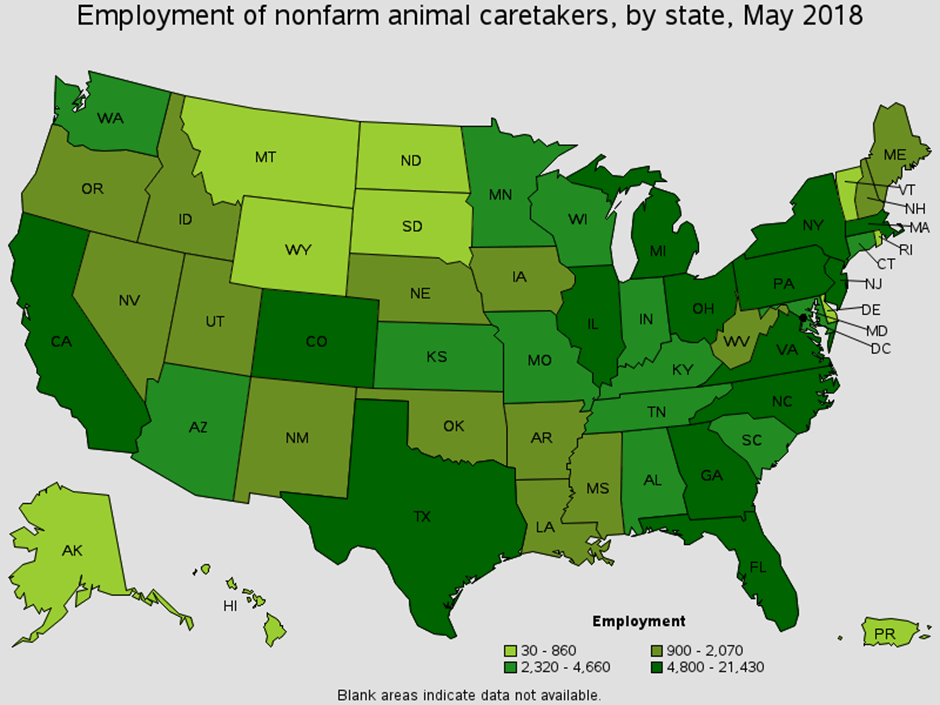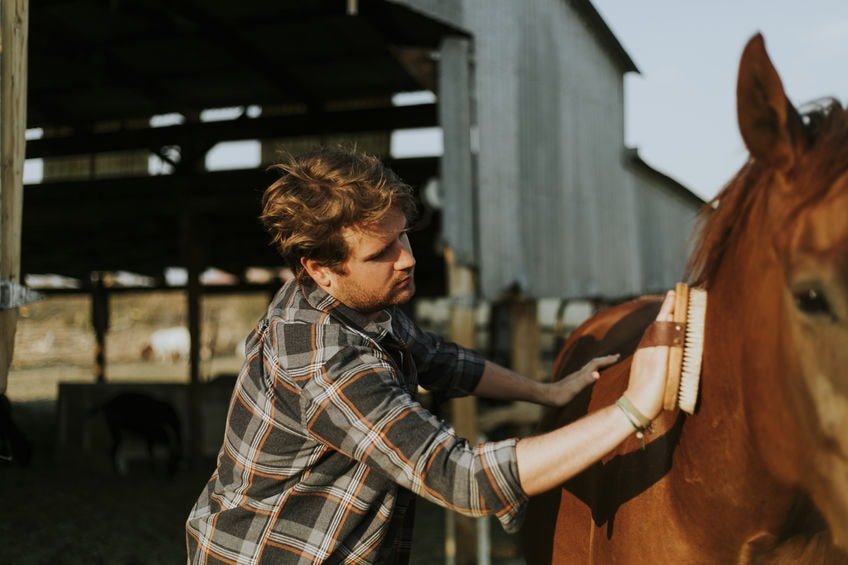The American Horse Council, has reported that the United States has a horse population of approximately 10.31* million and that the horse industry supports 1.4 million jobs in the United States¹.
The horse industry directly employs 701,946 people (full-time, part-time and seasonal), which equates to 453,612 full-time equivalent jobs. These full-time equivalent jobs are in the following segments of the horse industry¹:
| Racing | 146,625 |
| Showing | 99,051 |
| Recreation | 128,324 |
| Other | 79,612 |
There are also more than 25,000 farriers in the U.S. The U.S Bureau of Labour and Statistics breaks these occupations down into the category of ‘non-farm animal care-takers’.
The States with the highest employment of non-farm animal care takers are²:
| State | Employment (1) | Employment per thousand jobs |
| California | 21,430 | 1.26 |
| Texas | 15,660 | 1.29 |
| New York | 13,110 | 1.40 |
| Florida | 12,890 | 1.50 |
| Illinois | 8,380 | 1.40 |

In Canada there are 4,037 businesses that cater for the care of horses (which include Farriers, boarding (except racehorses) and Horseshoeing) as reported in the Canadian Industry Statistics for 2016ᵌ and a total of nearly 28,000 people who work in the animal care industry⁴.
| Total | Male | Female | |
| Pet groomers and animal care workers | 27,875 | 4,865 | 23,010 |
Those people working most directly with horses are Grooms, Stable hands and Farriers. According to a study conducted by the British Journal of Sports Medicine, an estimated 102 904 people with non‐fatal horse related injuries (35.7 per 100 000 population) were treated in American emergency departments each year from 2001 to 2003 inclusive⁵.
Most horseback riding injuries happen when a rider falls or is thrown from a horse. Falls are more likely to produce serious injuries if the horse is moving quickly or if the rider is dragged or crushed by the horse. However, not all injuries happen while riding. The most serious injuries while off the horse are from horse kicks⁶.
Kicks and bites are a common source of injuries. As a horse’s teeth and feet are its only means of defence, Grooms, stable hands and farriers can often find themselves the recipient of a nasty bite or kick when a horse feels threatened. Working in close proximity to horses, often inside stables, means there is more chance of crush injuries occurring. A horse weighs about half a ton and if they are not properly controlled in stables or other confined spaces where people are moving about, there is the risk of being accidentally crushed by a horse against a wall, gate or fence.
Those who work with horses are owed a duty of care by their employer. Grooms, stable hands and farriers are frequently on their own working with horses in rather dangerous circumstances. Staff should be using a lone worker system that enables grooms, stable hands or farriers to be monitored correctly. The system should ensure all workers are safe and able to check in or request help if needed. This is crucial to staff well-being, and necessary to comply with lone working regulations in The United States and Canada.
Ok Alone offers a solution to this problem. The lone worker safety app allows workers to check in at regular intervals and request help if they need it. The system has GPS that can locate a worker if they are out on a ride and something happens. Using Ok Alone is not going to stop a horse from kicking, but it will mean that someone else will know something has gone wrong and can then act to get help.
*World Animal Foundation, 2024
1 https://www.thefarrierguide.com/employment-guide/horse-industry-statistics-farrier/
2 https://www.bls.gov/oes/current/oes392021.htm#st
3 https://www.ic.gc.ca/app/scr/app/cis/summary-sommaire/11521
4 2016 Census Statistics Canada
5 British Journal of Sports Medicine. 2006 Jul; 40(7): 619–626. K E Thomas, J L Annest, J Gilchrist, and D M Bixby‐Hammett
6 https://www.healthychildren.org/English/healthy-living/sports/Pages/Horseback-Riding.aspx

As an expert in lone worker content management, I possess an extensive knowledge base and experience in the area of lone working and safety monitoring. My expertise in this field encompasses a wide range of areas, including risk assessment, training, communication, and technology. I have a deep understanding of the unique risks associated with lone workers and have researched and written many projects and articles to educate people in how to mitigate these risks.
Throughout my time with Ok Alone, I have kept up to date with technological developments, legislative changes and regulations that have been introduced to help organizations ensure the safety of their lone workers.

